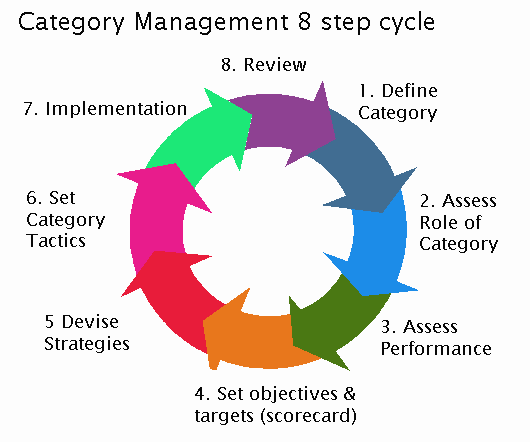The Category Management concept originated in the 1980s. Over the years, it has evolved to become a systematic process where retailers and suppliers work jointly together to manage categories as strategic business units (SBU). Each SBU has its own set strategies and KPIs. Both parties collaborate in sharing of data and information, as well as joint business planning, with the common goal to deliver value to the consumers.
Category Management is a 8-step process:
Step 1: Define Category
Step 2: Assess Role of Category
Step 3: Assess Category Performance
Step 4: Set Category Scorecard
Step 5: Derive Category Strategy
Step 6: Set Category Tactics
Step 7: Implementation
Step 8: Review
The Category Management approach drives discipline and focus on working towards achievement of key goals. The collaborative relationship between retailers and suppliers value-adds to mutual businesses so that together both parties achieve bigger results for their categories. Typically, good implementation of Category Management can bring at least 30% improvements in category sales as well as bottom lines, depending on the intended goals.
If you would like to know how Category Management can help you in your business, contact IngSights today! We can share more details and help you to implement Category Management in your business.


Recent Comments